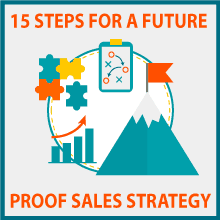
Does your company have a sales strategy? And if it does, when was the last time you’ve taken a look at it?
Technological progress changed each and every industry on the planet, and the changes are far from over. Some of the tools and tactics considered by many to be essential for sales today simply didn’t exist just ten years ago.
That’s why now is the right moment to take a hard look at your sales strategy. And if you don’t have a sales strategy in place? Build one from the ground up that is modern, productive and optimized for success.
Here are some tips on how to do it:
1. Understand the core value of your business and refine your pitch
First impressions are important. Whether your sale is successful or not depends on a split second decision by your potential customer. The clock begins ticking when you contact a lead.
Once the clock starts, you have a limited amount of time to peak your lead’s interest. If you decide to spend that time on self-congratulatory cliches like ‘our business offers great value’, or ‘it’s the best on the market’ — you’re going to lose the deal.
Instead, treat your potential customers like busy investors. In an initial conversation, your pitch shouldn’t be longer than just a couple of sentences. Focus on explaining the core value of your business — share what exactly you do, how you help your customers overcome their challenges, what separates you from the pack, and why that’s important.
Sometimes prospects won’t even know that they face a particular challenge and that there is a better way to operate. These are your best leads, because you’ve delivered value just from an initial phone call.
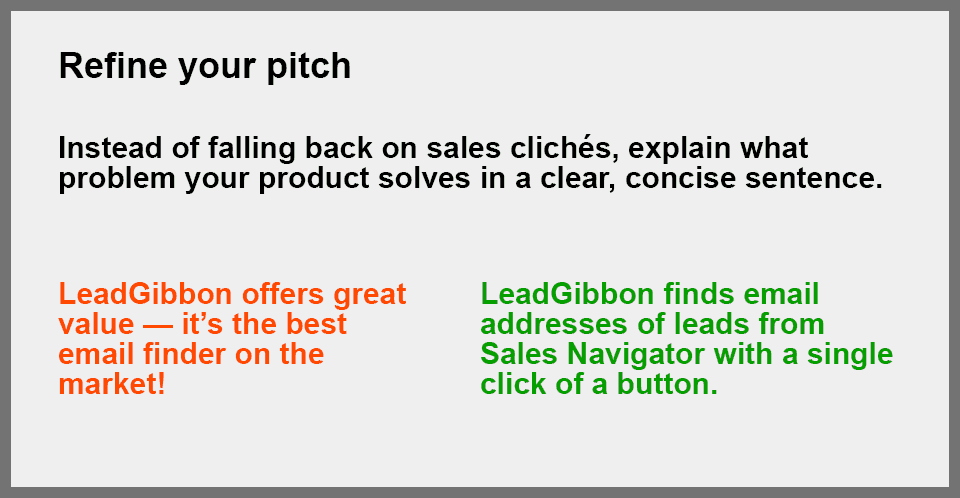
2. Hire the right people — from diverse backgrounds
A sales team is the direct reason why sales strategies work or fail. Hiring wrong people means that your company is going to leak energy, money, and — most importantly — time.
People on your team should possess a number of skills: generating leads, writing cold emails, talking to customers on the phone. But pay attention to skills not directly tied to selling. A great candidate today might also know how to write great copy, have some basic knowledge of graphic design, or be able to perform data analysis.
Today, experts in the field say that most companies will benefit from a 50/50 combination of inside and outside sales representatives. Depending on the type of business, hire sales reps that best suit your needs. But in most cases, you’d probably benefit from having people on the team who have experience in both inside and outside sales.
Another important thing to consider is your candidate’s background. Diversity improves your chances of success. People from different cultures, industry experience, and educational background, etc. will help you better compete in a global environment.
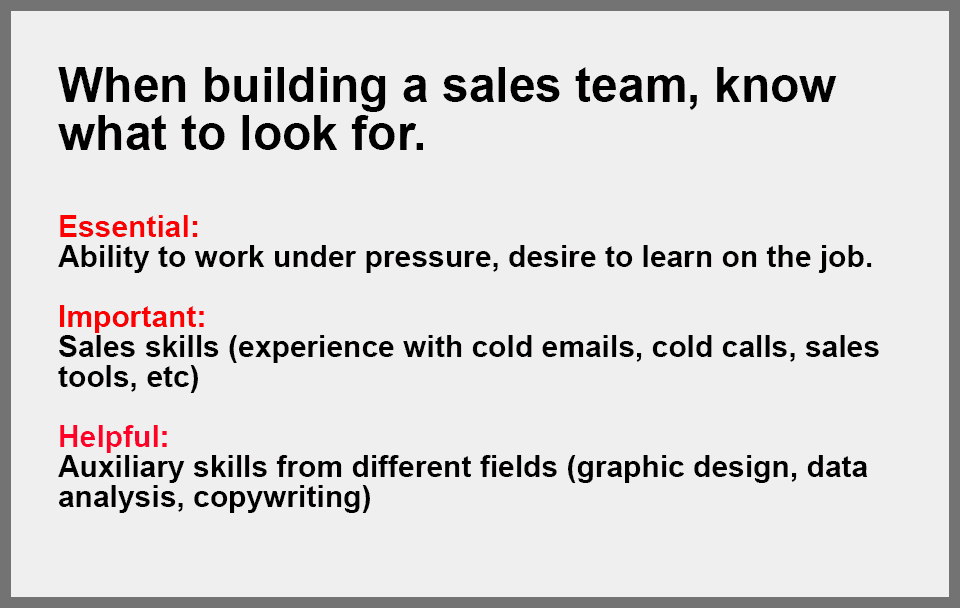
3. Keep your sales team motivated
Hiring great sales representatives is only part of building a great sales team. Even if you have the most experienced professionals working for you, they will not be able to perform at their best unless the environment they work in is healthy and fair.
Make sure that you’re properly motivating your sales team by offering the right rewards, encouraging work/life balance and implementing clear communications (we’ve recently published an article explaining all these steps in detail, so give it a read.)
Try to eliminate stress as much as possible from your sales process. A small motivated team can outperform a huge team that’s working under constant pressure.
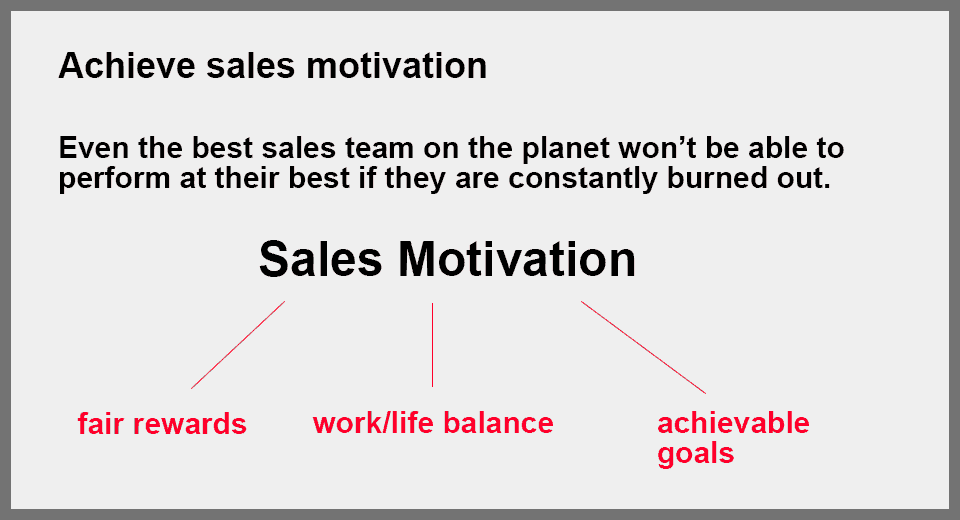
4. Design your schedule (and budget) around potential mistakes
No matter how hard you try to create a perfect schedule, things will always go off script. Mistakes happen, and sometimes a project will go over budget or take longer than you hoped it would take.
That’s why you should always leave yourself room to make mistakes while planning the next sales quarter. If you think that a task is going to take three weeks of your sales team’s time, give them a week buffer, and schedule four.
If they manage to achieve their goal in just a week? Fantastic — proceed to the next step in your plan. If they don’t, you’ve already scheduled that additional week and you can be sure that other planned tasks won’t be affected.
This same approach will improve your budget, too. After you’re done allocating your funds for the next quarter using metrics like Annual Run Rate or the rule of 78, add some additional funds to the hardest project. It’s better to be safe than sorry.
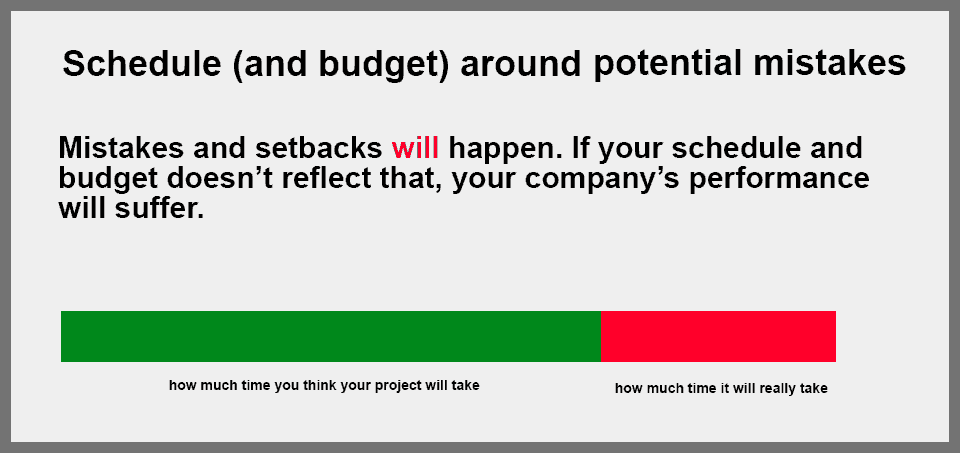
5. Aim at low-profile markets first
Obviously, you want to sell your product to the biggest and richest companies out there. But if you’re just starting out (depending on your product), it may not be the best idea.
Start small. Find a niche market with lots of small businesses that you can easily get in touch with. If you can, find a niche within that niche.
As an example, if you want to sell something to dental facilities around the world, start with dentists in small clinics around Dallas first – where you might get a chance at face to face time.
This way you’re going to get some traction in the field, earn much-needed experience, and understand what specialists in this niche require most. And who knows — maybe some of your customers will recommend you to their friends who work at bigger companies.
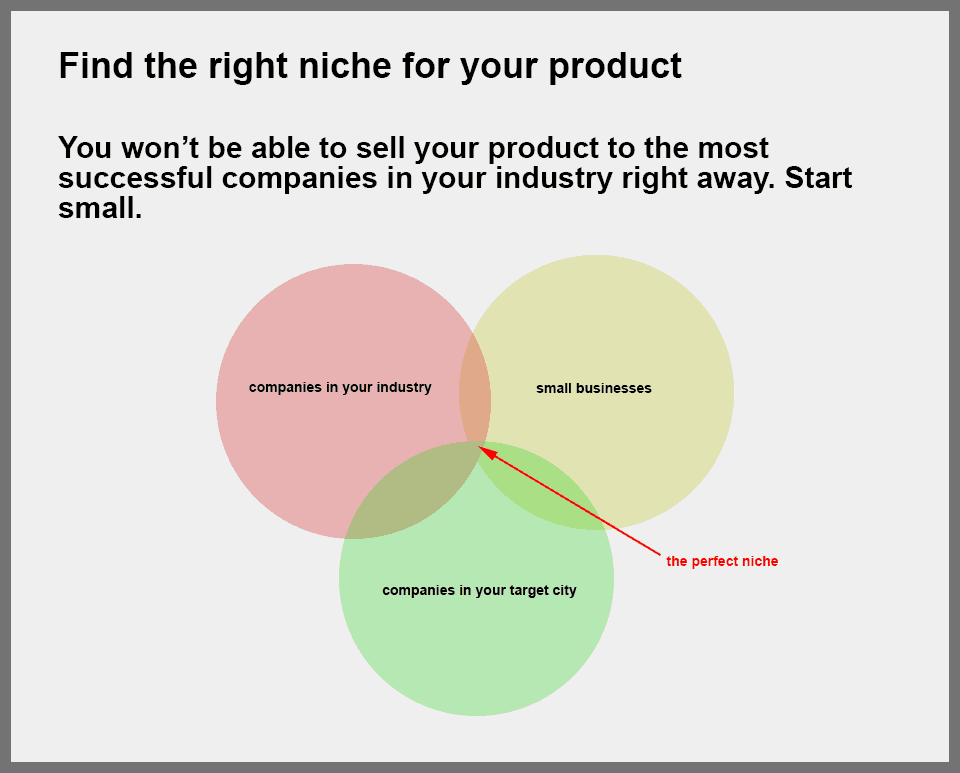
6. Build a profile of your ideal buyer
On a related note, do you know who you’re selling to?
There are about 7 billion people on the planet. We’ll take a chance and guess that 99.9% of them won’t be interested in your product at all. That’s why it’s so important to know your customers before you see them.
So how do you do it? Take time to design an Ideal Customer Profile (ICP, sometimes also referred to as Ideal Buyer Profile) for your business.
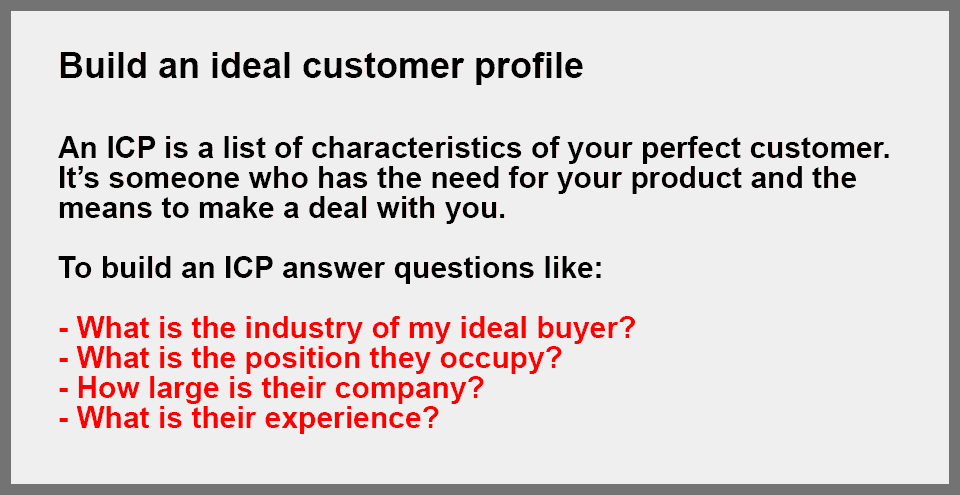
Be as specific as possible with your buyer profile. If you’ve already closed deals with some customers, look for qualities that they all share and integrate them into your ICP.
A well-researched ideal buyer profile will become the basis for your prospecting and lead generation. Obviously, no customer will fit it 100%. But if you don’t know who you’re looking for, your buyer becomes that much harder to find.
7. Prioritize decision makers
One of the most important things you can do for a successful sale is cut through the noise. Find people who make decisions in the companies you want to sell to, even if it takes you longer to reach out to them.
The list includes CEOs, top managers and so on. Don’t pitch a junior manager with your product, as they will just distort your message while reporting to their boss.
And if you feel like you’re being bounced between managers, but none of them can make an important decision? Just drop the negotiations and save yourself some time.
8. Invest in the right set of tools
Sales stopped depending on a Rolodex a long time ago. Acquiring the right set of digital tools is imperative for a more productive, fast-paced sales strategy.
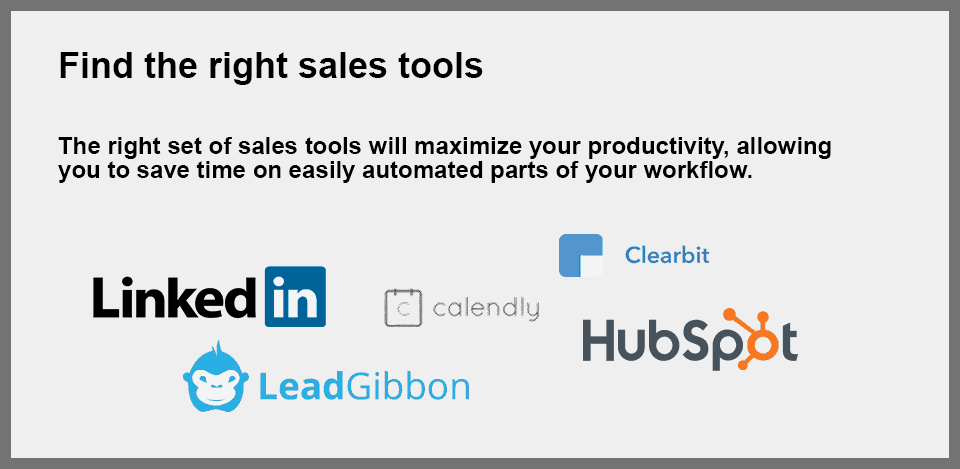
For example, many consider LinkedIn Sales Navigator to be an essential sales tool. It allows you to filter out LinkedIn’s database of 560 million accounts to find people who specifically fit your ideal buyer persona, asses various market opportunities, work with leads directly from LinkedIn, and much more.
With the addition of LeadGibbon, Sales Navigator becomes a powerhouse for prospecting. The combo allows you to quickly sort out leads and find, validate and save email addresses and other data of people you want to contact. This means that you can build a prospect list in minutes instead of hours.
Tools like Google Alerts will allow you to experiment with brand monitoring for a whole variety of potential gains. And after you’ve found the sales strategy you’re going to work with for the foreseeable future, start thinking about investing in professional sales tools like Clearbit etc.
10. Understand the value of cold emails
In a lot of industries, the most convenient way to reach out to customers is via a cold email. That’s why perfecting the way you approach cold emails is an important part of your sales strategy.

A great email begins with the right subject line: it should peak the interest of your prospect while staying away from being pushy (here are some ideas on how to achieve this.)
The email itself should be short and to the point. Personalize cold emails as much as possible and show your customers that you respect them by researching who they are.
As we’ve stated before, your email should explain how exactly your product will improve a customer’s workflow. Also, don’t forget that your email signature is just as important as every other part of your cold email.
11. Start gaining social ground
Sometimes the best way to reach a deal with a customer won’t be through a sales pitch.
Build relationships and start a dialogue. Send leads feedback on their work without mentioning your own company. Reply to their tweets. Discuss the articles that they publish on LinkedIn or Quora.
And when you reach deals with satisfied customers, ask them to introduce you to their acquaintances with similar problems. A good social introduction beats every other sales tactic.
12. Don’t say no — but understand your limits
Your prospective customer can and will have very specific (sometimes even absurd) requests.
They might want you to add a feature that 99% of your other customers won’t use. They might want you to change some core part of your business to accommodate their needs.
Someone might demand a ‘simple feature’ the development of which will actually cost a fortune.
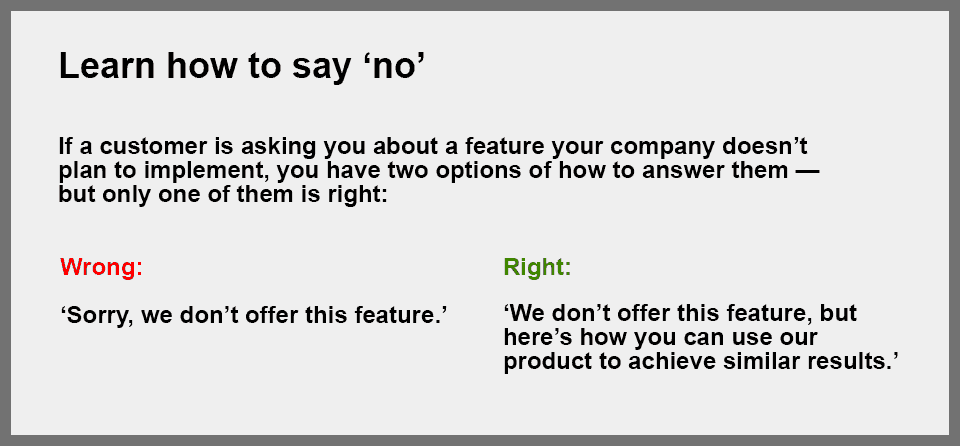
Here’s the thing. If you reply to such requests by simply saying ‘no, we won’t do this’ people will feel discouraged — and associate their feelings with your product.
Instead, learn to offer solutions. If your client is asking about a feature that you have no plans of implementing, explain how to use your tool in a different way to achieve similar results. Or explain why the thing they want to do isn’t actually the best strategy. Or point them to other tools that can better accomplish their goals.
This will show your customer that you care — and give them a reason to either use your product, and/or share positive things about your company to colleagues. As always, it’s all about the relationships you build.
On the other hand, know your limits. If a customer isn’t going to discuss a deal with you unless you make a 50% price cut, it’s probably best to put your attention elsewhere.
13. Prepare to hear ‘no’
No matter how much time and money you’ve invested in your sales strategy, you’re going to hear no — and you’re going to hear it a lot.
That’s absolutely normal. As we’ve stated previously, 99.9% of people on the planet have no interest whatsoever in the product you’re selling.
Of the people who are interested, a lot won’t have the time or budget to have a discussion — and many will already use your competitors product.
That’s OK. But if you a hear a no, don’t discard that prospect outright. Instead, learn the reasons why they rejected you — and utilize that information.
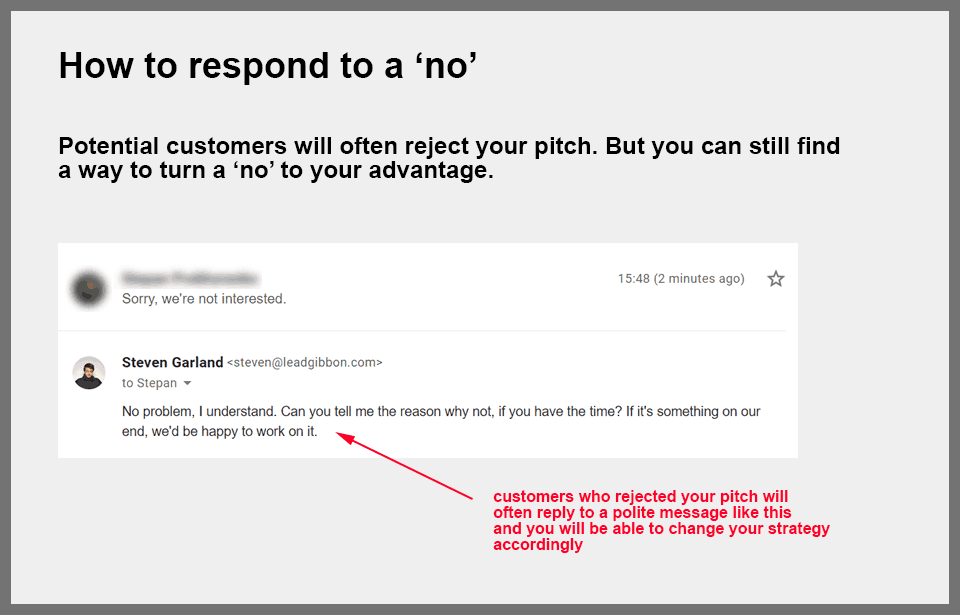
14. Always follow up (without being annoying)
You won’t achieve much if you expect all your deals to happen after just one cold email or one cold call.
Most of the deals happen during some kind of a follow-up. Learning how to follow up properly is one of the most important aspects of your sales strategy. If you follow up with cold emails, here’s an article where we explain in detail how to do it properly.
15. Have a backup plan
Maybe you didn’t allocate your budget the right way. Maybe the niche you targeted had far fewer leads than you hoped for. Maybe nobody replied to your cold emails.
Mistakes happen and you should learn from them. But you should also prepare for them. So write a backup plan at the same time that you’re building your main sales strategy. This will help you avoid starting from a blank page again if things go off track.
In your back up plan, include some ideas about different messaging around your product, potential customers in different niches, etc.
Most of the time, trying to write a backup plan will help you look at your business from a different angle and improve the main sales strategy you’re going to use.
Conclusions
Obviously, these 15 steps are far from the only steps you should take to build a perfect sales strategy. But they will set you on course to a more refined and modern approach to sales.
As always, we’re interested to hear more from you. If you feel like we’ve missed something, please leave us a comment in the comments section below.

Leave a Reply